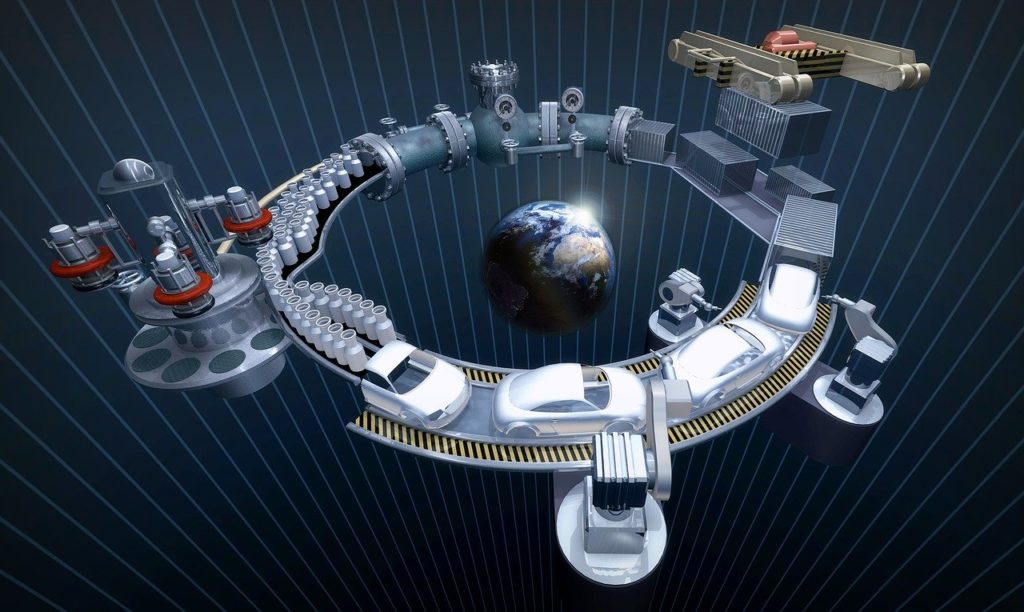
SAP is one of the leading vendors to run business for many companies. Somehow I remember old airport commercial – “A Runs on SAP”. I’m sure you’ve seen it at least once. SAP is a sophisticated and comprehensive environment to manage many aspects of company business data and processes.
When it came to SAP PLM and the ability to manage engineering data, I was always hearing kind of ‘but…’ from many companies. As much as companies loved SAP, when it came to the point of managing engineering bill of materials, CAD data and integrated with engineering systems, companies very reluctant and were running other PLM systems integrated with SAP.
My attention was caught by a LinkedIn article speaking about the future development of SAP PLM cloud technologies. Navigate to this link to see the article – Inspiring Largest SAP PLM even in Europe in a Futuristic Atmosphere.
The picture worth thousands words. SAP is developing a fully-fledged PLM system integrating SAP with CAD (mechanical and others).

The article from SAP ECTR Forum gives you more information.
The digital transformation requires a digital value chain. SAP Product Lifecycle Management(SAP PLM) provides jointly with the strategic integration platform SAP ECTR the necessary data basis for a single source of truth. SAP ECTR integrates authoring tools into SAP PLM and combines SAP data with data from external sources: MCAD files, ECAD files, software files and many more. It connects company divisions, as for example engineering with the shop floor by means of add-ons, such as Factory Control Center | FCTR, and it also prepares the SAP data as needed. How do companies make the most out of this?
I found this article and planning very interesting because SAP is right – it is impossible to bring a digital value chain without immersive integration of all elements of data and systems. It is easy to say, but very hard to implement. While marketing slides are a great starting point, the details are important.
I didn’t find any published documentation about what MCAD and ECAD systems are integrated and how SAP PLM cloud is creating engineering BOMs by combining the right components and pieces of information. If you get the info or links, please share. However, this is an interesting place to watch. The way SAP pushed cloud PLM story is very interesting.
It made me think about what can make SAP Cloud PLM engineering solution viable for manufacturing companies to solve engineering integration problems. Here are two main things that can help in making it happen.
1- Engineering love. As much as the SAP business system is important for businesses, the question of how to engineers will adopt SAP PLM solution is the one that demands the answer. Engineers are very specific customers and to make them happy is not an easy task.
2- CAD and engineering integrations are not simple when it comes to cloud software. Traditional CAD-PLM development was always done in a client-server environment. To deliver cloud-based engineering PLM integration is another challenge SAP will have to overcome.
What is my conclusion? Digital transformation demands a complete rethinking of the way data is managed in the companies. Connected data, integrated services and intelligent use of information is a foundation of the digital value chain. To make it work companies will have to connect and integrate existing engineering data sources. Will SAP succeed in making this connection success? I don’t have an answer to this question, but innovative engineering integration can be one of the key elements of success. Just my thoughts…
Best, Oleg
Disclaimer: I’m co-founder and CEO of OpenBOM developing cloud based bill of materials and inventory management tool for manufacturing companies, hardware startups, and supply chain. My opinion can be unintentionally biased.
The post Cloud PLM And SAP Digital Value Chain appeared first on Beyond PLM (Product Lifecycle Management) Blog.



Be the first to post a comment.